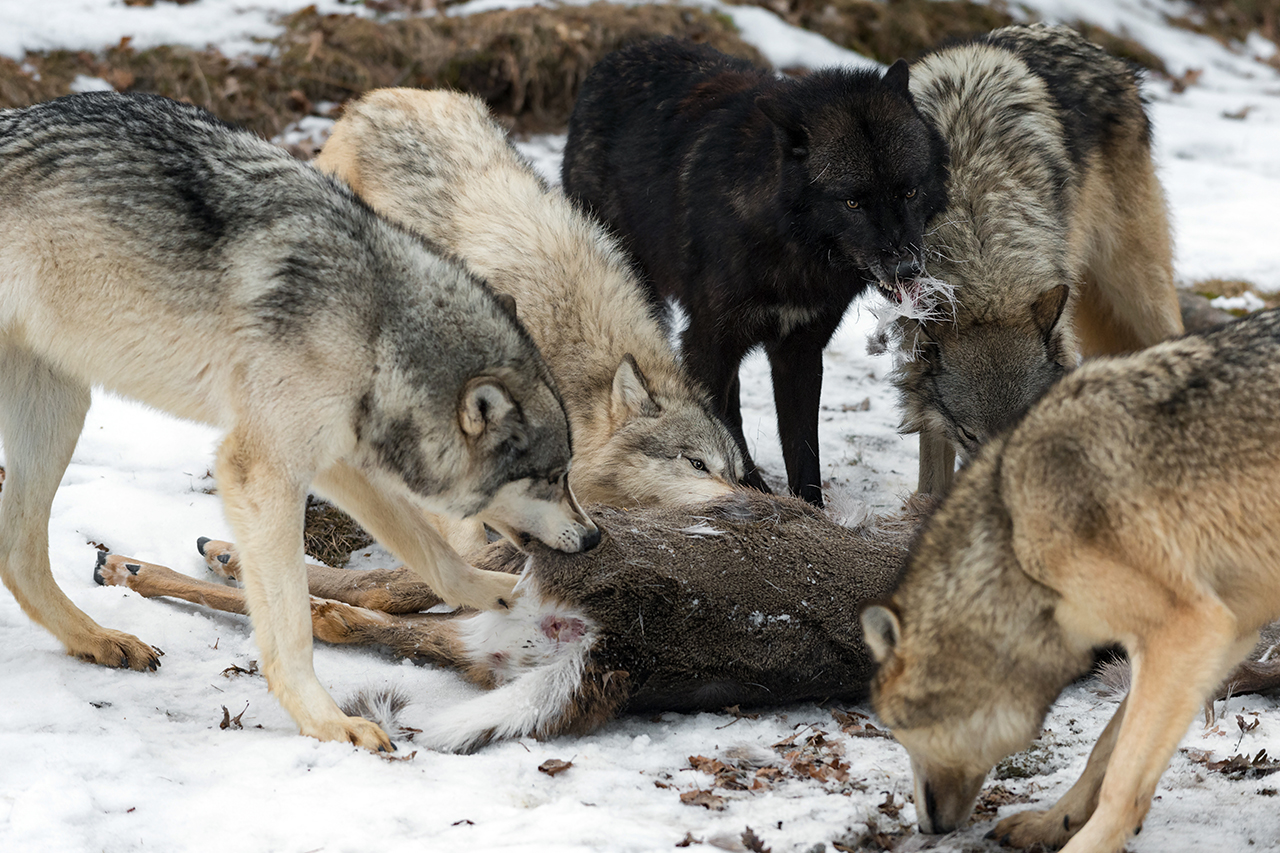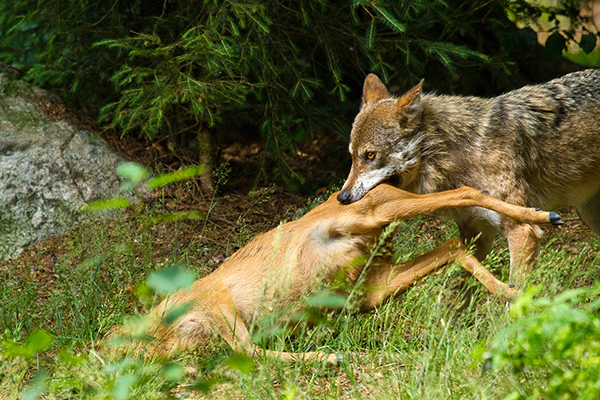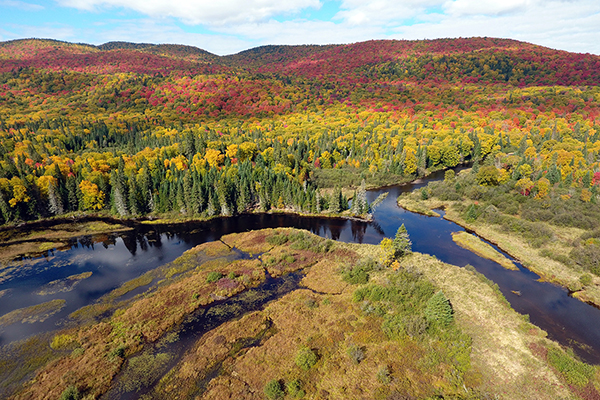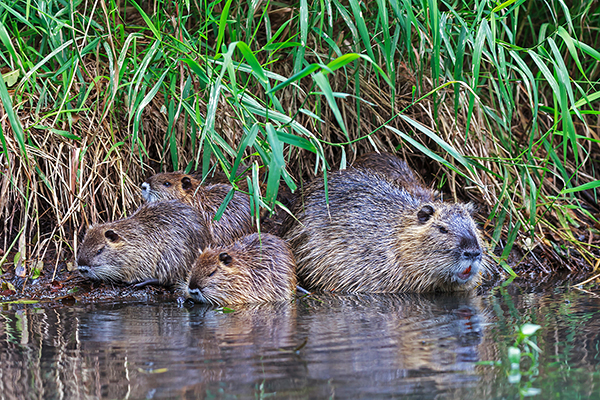An apex predator that's key to the natual balance of ecosystems
Due to its impact on the entire food chain, and to the fact that it protects the natural environment from excessive grazing, the wolf is considered a keystone species whose presence is essential in maintaining balanced ecosystems. It has also been scientifically proven that this predator helps promote biodiversity.

Regulating prey
Scientists have known for some time that apex (or top) predators play a key ecological role. Thanks to its presence at the top of the food chain, the wolf regulates prey populations on its territory, helping avoid an overabundance of herbivores that can jeopardize plant regeneration. In the canid family, this long-term balance between predator and prey has existed for over 40 million years!
In addition to controlling excessive grazing of plantlife—and therefore ensuring a more balanced ecosystem—the regulating effect of wolves on the deer and moose population helps promote the health of the cervids. Enen though wolves tend to live in packs, it can be very challenging for them to take down large prey. A healthy white-tailed deer can run at much the same speed as a wolf, making it hard to catch, while moose, with their powerful kicks, can easily injure or even kill a wolf. As a result, wolves tend to target individual animals that they are more likely to be able to kill, i.e., weak, older, wounded, or sick animals, meaning the stronger individuals have a better chance of surviving and reproducing. The wolf’s actions also limit the risk of disease and epidemics spreading among the prey population.
The wolf’s regulatory effect on its prey is felt not only among the cervid population. A Québec study showed that beaver can make up nearly half of the wolf’s diet, depending on the season. Except in winter, beaver can most often be found on land, where they search for food and the materials they need to build their lodges and dams, which makes them very vulnerable. In the region, the average colony (or family) of beavers consists of four or five members, whereas, in theory, there could be a dozen or so. Beavers, on average, have four young a year, and the young animals don’t leave the colony until the age of two, which means the colony consists of two adults and two generations of young. These numbers clearly suggest the major incidence that wolves can have on the population of this semi-aquatic mammal characteristic of the park and the region.
Boosting biodiversity
The Yellowstone example

The widely cited example of the 1995 reintroduction of wolves in Yellowstone National Park in the United States is one that aptly illustrates the ecological role of the wolf. Over 70 years after its disappearance, the return of this top predator resulted in a drop in the park’s overabundant elk population. By reigniting its prey’s fear, it is believed the wolf forced the elk to be more mobile and to graze less intensively in the same area. In turn, this has led to improved regeneration of the vegetation, including along waterways, helping improve shoreline stability and reducing the deterioration of aquatic habitats. According to biologists who have studied this phenomenon known as “trophic cascade,” this increase in food sources has brought about an increase in the beaver and bison populations.
What’s more, the increase in the abundance of certain fruit-bearing bushes—which have benefited from the reduced number of herbivores—appears to have had a positive effect on the density of the grizzly bear population. It is also thought that the dominance of the wolf over the coyote has led to a nearly 50% decrease in the population of the latter, meaning, today, it is possible to observe a wider range of rodent diversity as well as the return of certain nesting birds within the park since these animals, while soughtafter prey for the coyote, are of little interest to wolves.
The Yellowstone example shows that the presence of the wolf actually increases the abundance and diversity of plants, mammals, birds, amphibians, and reptiles. In addition to helping boost biodiversity, wolves even appear to have a positive impact on the park’s water system. A number of scientists have estimated that, if wolves had not been reintroduced in the area, the local vegetation would have continued to deteriorate dramatically, contributing to the habitat’s progressive collapse. The presence of the wolf has therefore improved the stability and resilience of the natural environment, meaning the ecosystem is better equipped to handle major disruptions such as climate change.
Did you know...

Not only are wolves essential to the health of ecosystems, they are also what’s known as an “umbrella species,” meaning that conservation efforts to protect this species benefit biodiversity as a whole, since the wolf’s territory encompasses that of several other species that have a smaller home range.
Wolves must travel huge distances to seek out the prey they need to survive, and each pack defends a territory covering several hundred square kilometers. This means that when we protect the wolf and its habitat, we are protecting the whole ecosystem!
